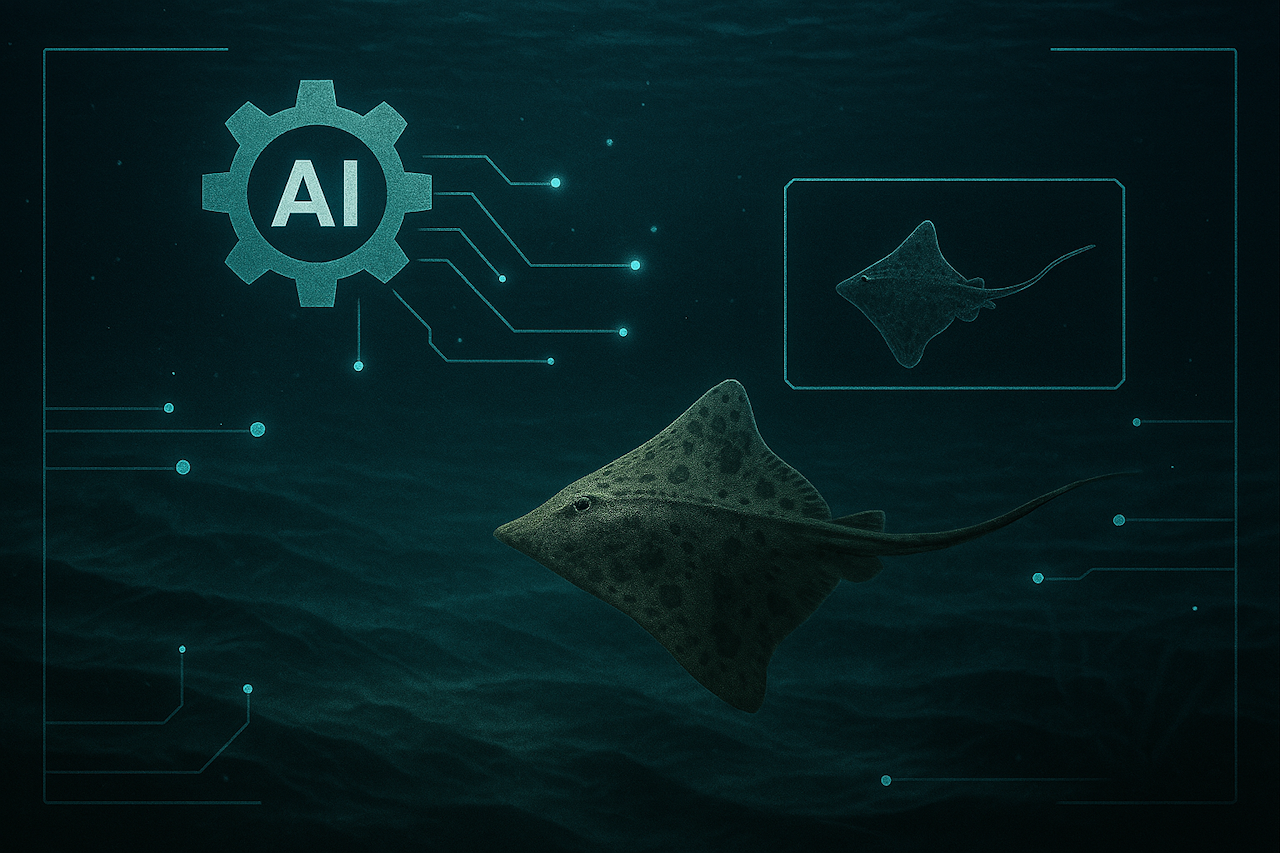Today, technology meets nature, and Scotland’s daring project is reshaping marine conservation by tracking the elusive flapper skate using an AI-powered database. This initiative transforms conventional environmental monitoring into a high-tech mission by harnessing machine learning and advanced image recognition, thereby enabling researchers to visualise underwater worlds in entirely new ways. An influential report describes this breakthrough and has captured the imagination of scientists and conservation advocates alike.
Marine ecosystems have never been more valued, yet they face unprecedented threats. The integration of cutting-edge AI not only enhances species identification and data analysis but also bridges the gap between traditional ecological methods and modern digital tools. These revolutionary techniques come at a crucial time when sustainable practices are urgently required to counteract marine degradation.
Riding the Waves of AI-Driven Data Analysis
Artificial intelligence is ushering in a new chapter in marine conservation by enabling real-time monitoring of underwater environments. Machine learning algorithms now sift through terabytes of data—from sensor outputs to extensive underwater footage—to spot subtle patterns that traditional monitoring methods often miss. This rapid data-processing capability is essential for assessing marine biodiversity and identifying environmental shifts before they escalate.
The combination of real-time monitoring systems with interdisciplinary collaborations is forging a powerful alliance for marine preservation. Progressive technology firms and research institutes are working alongside environmental organisations to refine these digital tools, resulting in real-time insights into the nuanced health of marine habitats.
Spotlight on Scotland’s Flapper Skate Initiative
At the heart of these technological advancements lies the groundbreaking Scottish project targeting the flapper skate. By deploying an AI-powered database that records intricate details of the species’ movement and habitat, the initiative not only enhances species tracking but also deepens the understanding of broader ecological trends. This pioneering project demonstrates how AI can elevate conservation efforts to unprecedented levels.
Collaboration is key to the success of this initiative, as local conservation agencies team up with tech innovators to surmount the logistical challenges inherent in marine research. This model is setting a precedent for future projects that aim to leverage AI in marine biodiversity monitoring and ecosystem management, thus encouraging greater interdisciplinary cooperation.
Global Trends and Technological Synergies
Globally, emerging trends indicate that AI is revolutionising environmental protection. Numerous projects have harnessed machine learning to accelerate species identification, mitigate environmental risks, and even forecast ecological changes. By integrating state-of-the-art sensor technology with sophisticated algorithms, researchers are now charting a clearer picture of marine ecosystems, a development that underlines the powerful potential of AI in tackling conservation challenges.
Interdisciplinary collaborations are flourishing across continents, with local initiatives drawing inspiration from international advancements. Detailed examinations of innovative marine conservation strategies reveal insightful developments and cutting-edge technology trends, bridging the gap between technical ingenuity and ecological safeguarding.
Influencers Steering the Conservation Vanguard
A diverse array of players is driving the rising tide of AI in marine conservation. Esteemed research institutions and universities are at the forefront, creating detailed models that simulate oceanic conditions and forecast environmental impacts with impressive accuracy. These organisations are further supported by government bodies and non-profit agencies who integrate AI for meticulous environmental monitoring, ensuring that policy measures keep pace with rapid technological advancement.
Technology providers also play a pivotal role by developing the AI tools that power these initiatives. Their collaboration with global partners enables data-driven insights to support on-the-ground conservation efforts, proving that interdisciplinary teamwork can overcome challenges such as handling vast datasets and addressing the needs of vulnerable marine species.
Navigating Challenges and Charting the Future
Despite the promising contributions of AI to marine conservation, significant challenges remain. Data overload is a pressing concern as the exponential growth in sensor information often outstrips traditional processing methods. Additionally, securing long-term funding and achieving cohesive cross-sector collaboration continue to be persistent hurdles, underscoring the need for scalable and cost-effective monitoring solutions.
Nevertheless, the future of marine conservation is bright. Innovations like Scotland’s flapper skate project serve as a high standard for forthcoming endeavours and inspire new strategies to harness AI’s comprehensive potential. With ongoing integration of research insights and a steadfast commitment to partnerships, the conservation sector is well poised to expand the role of AI in protecting our oceans.
Concluding with a Splash of Optimism
In these times of uncertainty, the advent of AI in marine conservation offers a refreshing counter-current to the challenges our natural world faces. The synergy of machine learning, real-time monitoring, and robust interdisciplinary collaboration represents the cutting edge of ocean protection innovation as highlighted in recent insights.
The transformative power of AI in safeguarding our ecosystems is only beginning to be fully realised. Researchers, technology experts, and environmentalists alike are encouraged to support these initiatives and collectively push the boundaries of sustainable marine ecosystems. As we advance into an era of digital environmental stewardship, the interplay of technology and tradition promises a future where our seas thrive in resilient harmony.
In Other News…
Meta’s Release of Llama 4 Meta Platforms unveiled the latest version of its large language model, Llama 4, introducing two variants: Llama 4 Scout and Llama 4 Maverick. These models are designed to process multiple data types, including text, images, and audio. Meta emphasised that these are their most advanced models to date and announced plans to open-source them. Additionally, Meta is previewing Llama 4 Behemoth, described as their most powerful model yet, intended to serve as a teacher for future models. Reuters
Microsoft’s 50th Anniversary and AI Initiatives Microsoft celebrated its 50th anniversary by highlighting a significant shift toward artificial intelligence. Executive Vice President Scott Guthrie reflected on the company’s evolution and its current focus on expanding features for its Copilot AI assistant. This move underscores Microsoft’s commitment to adapting to major technological changes and positioning itself prominently in the AI landscape. Axios
Consolidation of AI Copyright Lawsuits Twelve copyright lawsuits against OpenAI and Microsoft, filed by U.S. authors and news organisations, have been consolidated in the Southern District of New York. The plaintiffs allege unauthorised use of copyrighted materials to train large language models like OpenAI’s ChatGPT and Microsoft’s Copilot. This consolidation aims to streamline pretrial proceedings involving shared allegations. The Guardian
AI-Generated Political Content in China China’s state-run media, including CGTN and Xinhua, have released AI-generated videos mocking U.S. President Donald Trump’s tariff policies. These videos utilise animated scenes, such as dancing robots and anxious consumers, to criticise the negative economic impacts of U.S. tariffs on American citizens. This media campaign is part of China’s broader criticism of U.S. protectionist measures. Reuters


